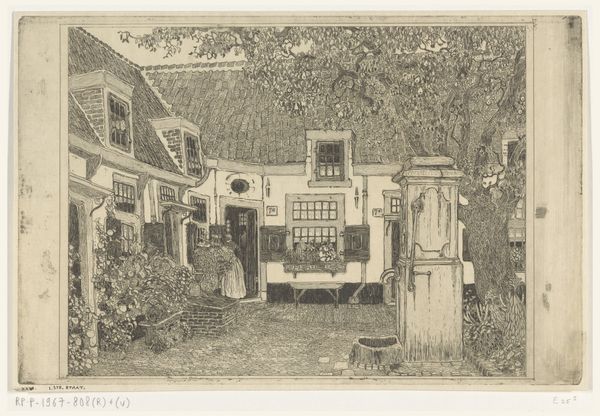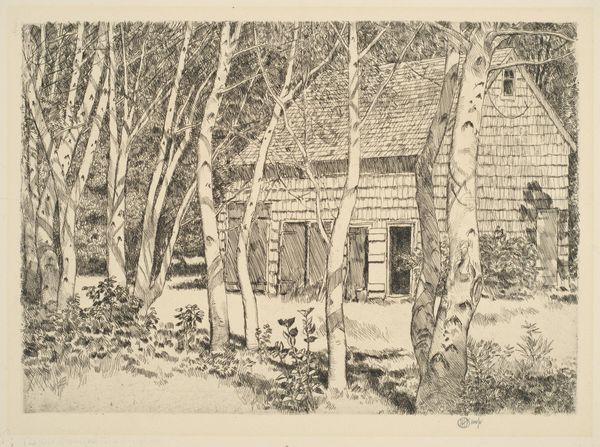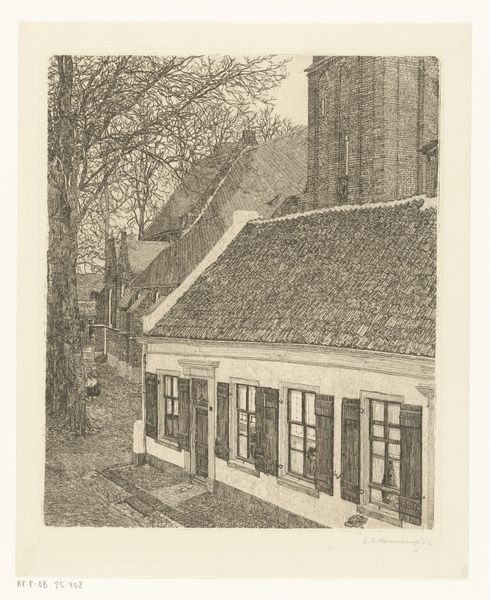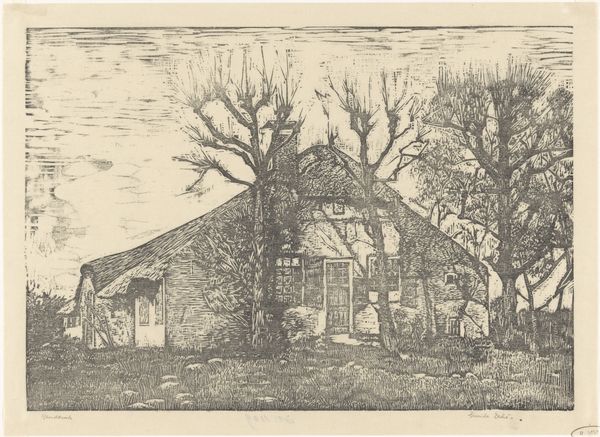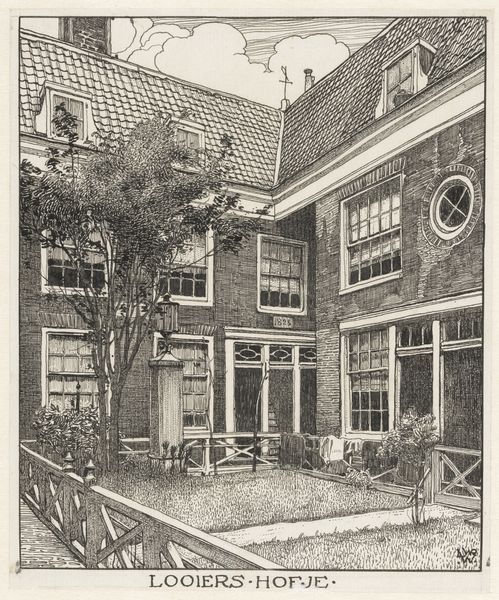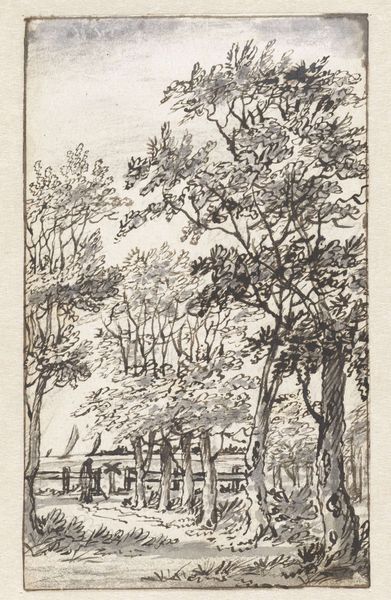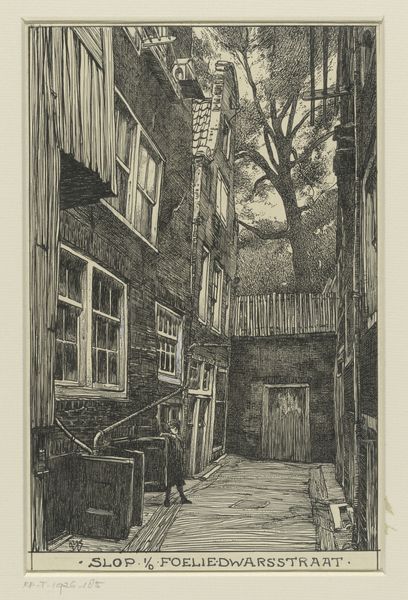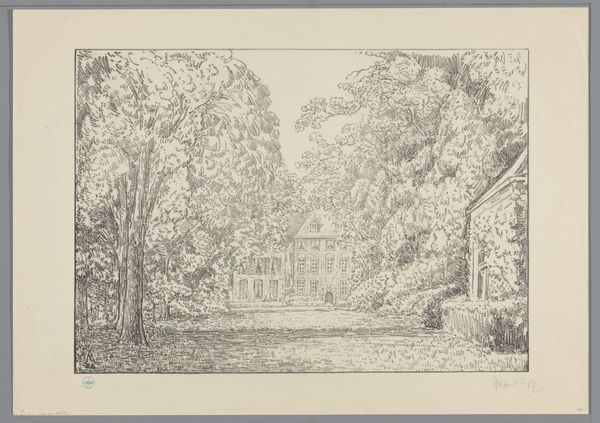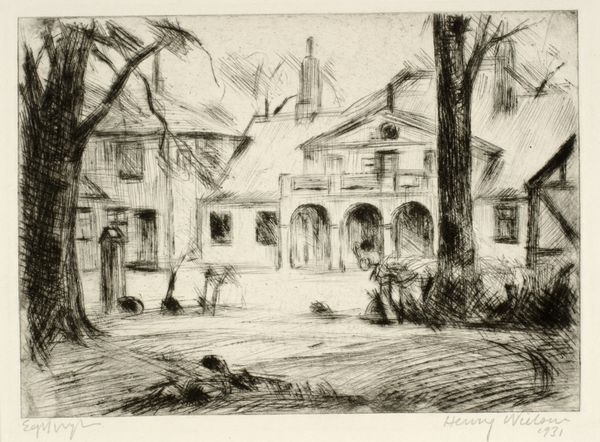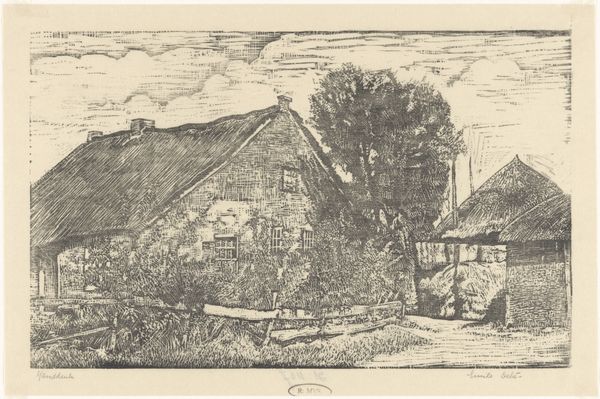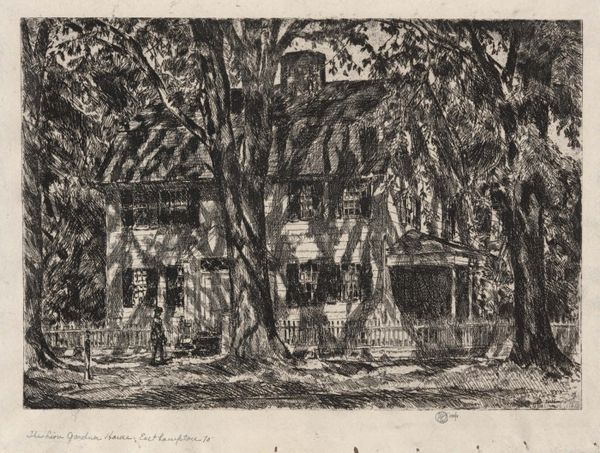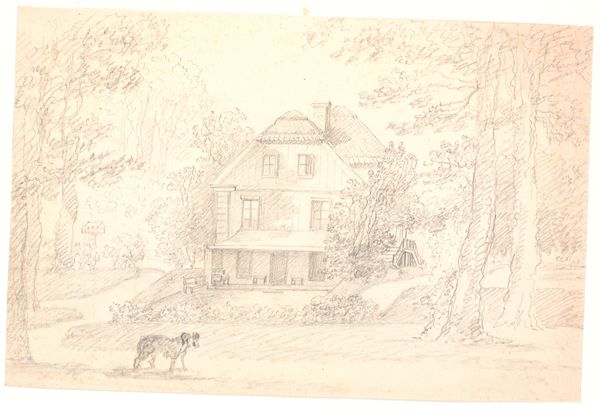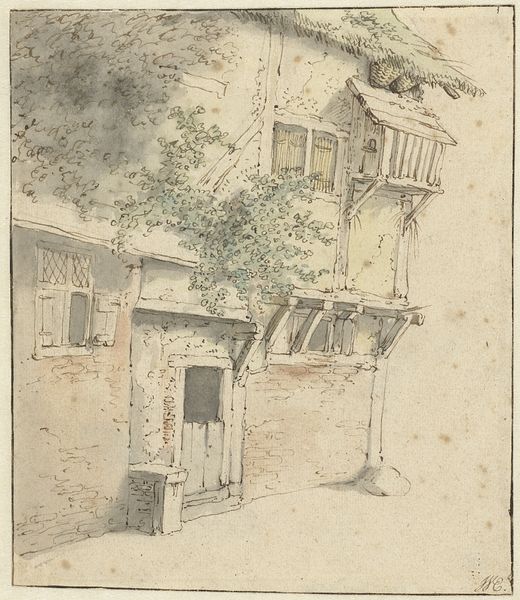
drawing, paper, ink
#
drawing
#
aged paper
#
pen drawing
#
dutch-golden-age
#
mechanical pen drawing
#
pen illustration
#
pen sketch
#
old engraving style
#
paper
#
personal sketchbook
#
ink
#
pen-ink sketch
#
pen work
#
cityscape
#
genre-painting
#
coloring book page
Dimensions: height 198 mm, width 253 mm
Copyright: Rijks Museum: Open Domain
Curator: The ink and paper drawing before us is Wijnand Otto Jan Nieuwenkamp's "Hofje van Loo in Haarlem," created in 1898. Editor: My immediate impression is a hushed, almost secret courtyard. It feels as if the everyday noises of Haarlem are muted here. A real sense of tranquility. Curator: Hofjes, these almshouses, were established throughout the Netherlands, beginning in the medieval period. This one provides a glimpse into a unique form of Dutch philanthropy. Nieuwenkamp has focused on a specific view offering insights into a small-scale, communal existence. Editor: Look how densely Nieuwenkamp renders every detail, the layered roof tiles, the gnarled tree, even the variation in paving stones. The pattern of the foliage, drawn with tiny, almost frantic strokes, strikes me as particularly vivid, it has real psychological intensity. Curator: That obsessive quality underscores your impression of it being hushed, and separate. These almshouses offered privacy within a regulated community. Notice the pump dominating the center of the yard. Clean water, a basic necessity, provided within the courtyard for all inhabitants. Editor: These hofjes often served a moralizing function. This is meant to demonstrate a kind of ordered humility and self-sufficiency for those residents, doesn't it? Though visually pleasing and rather picturesque to our modern eye, it held significant social and institutional meaning then. Curator: Precisely, this image reveals cultural memory through its visual language, carrying a weighty history of social structures and reform. Editor: Thank you. It is often hard to extract ourselves from that history in order to understand its meaning, even today. The piece invites questions about communal responsibility. Curator: A valuable contribution—reminding us how crucial historical context remains, regardless of aesthetic interpretations. Editor: Indeed, the image compels one to wonder, “What’s truly changed?”
Comments
No comments
Be the first to comment and join the conversation on the ultimate creative platform.
